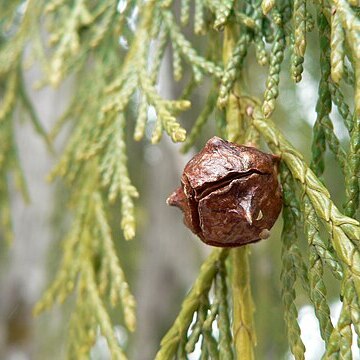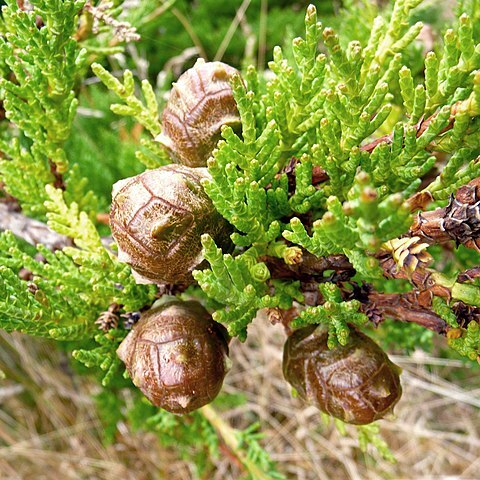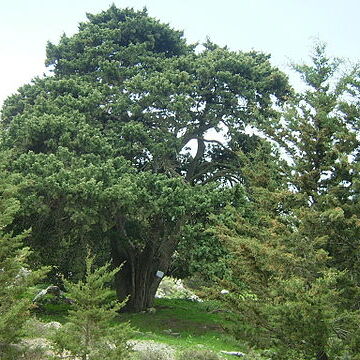Trees or large shrubs evergreen. Branchlets terete or quadrangular, in decussate arrays (or partially comblike in Cupressus macnabiana ). Leaves opposite in 4 ranks. Adult leaves appressed to divergent, scalelike, rhomboid, free portion of long-shoot leaves to 4 mm; abaxial gland present or absent. Pollen cones with 4--10 pairs of sporophylls, each sporophyll with 3--10 pollen sacs. Seed cones maturing in 1--2 years, generally persisting closed many years or until opened by fire, globose or oblong, 1--4 cm; scales persistent, 3--6 pairs, valvate, peltate, thick and woody. Seeds 5--20 per scale, lenticular or faceted, narrowly 2-winged; cotyledons 2--5. x = 11.
Trees (rarely shrubs) evergreen, monoecious; branchlets ascending, rarely pendulous, often decussately arranged, terete or 4-angled in cross section. Leaves decussate, 4-ranked; juvenile leaves needlelike; adult leaves scalelike, with an abaxial resin gland, usually not dimorphic along branchlets. Pollen cones ovoid or oblong; microsporophylls 6-16, each with 2-6 pollen sacs. Seed cones terminal, solitary, globose or subglobose, dehiscent when mature in 2nd year; cone scales 8-16, decussate, peltate, woody, each fertile scale bearing 3-20 seeds; free bract apex a short mucro. Seeds slightly flattened, ridged, with lateral, narrow wings. Cotyledons 2-5.
Densely branched, monoecious trees or shrubs. Juvenile leaves decussate, spreading, acicular. Adult leaves decussate, decurrent and adnate to stem for much of length. Male cones solitary, terminal, comprising numerous decussate, imbricate scales; each scale with 2-6 abaxial microsporangia. Female cones solitary, terminal on short lateral shoots, more than 10 mm diam., comprising 4-14 peltate, valvate, fertile scales; each scale with 1-20 erect ovules on enclosed adaxial surface. Seeds narrowly winged.



